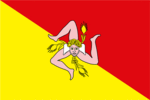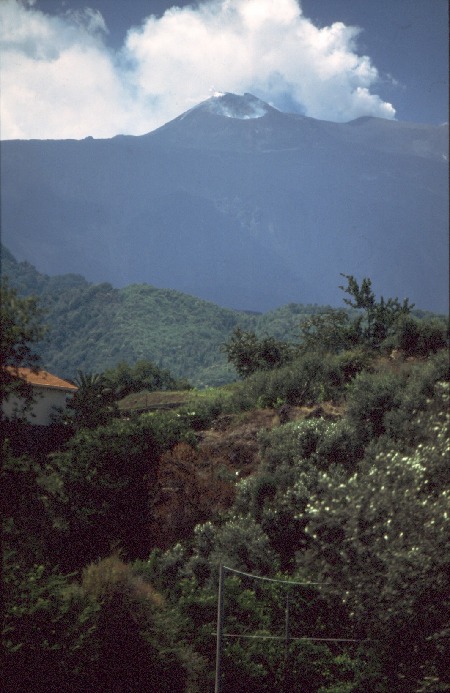
Trinakia
Strabo begins his discussion of Sicily as follows: "Sicily is triangular in shape, and therefore it was formerly called Trinacria, but later, with a more evocative change of name, Trinakia." Strabo, page 265 (Casaubonus edition) From the earliest times, Sicily has been a focal point of Mediterranean cultures. The legendary tomb of Minos is said to be located here, in Eraclea Minoa. According to legend, he met his death while pursuing Daedalus. Why he pursued Daedalus, you'll have to read elsewhere. The story of Minos, his wife Pasiphaë, Poseidon, Daedalus, and ultimately the infamous Minotaur is not suitable for young audiences—but it's definitely worth reading. Pasiphae - Wikipedia. It was passed down by Apollodorus - who else? The Sicilians, Phoenicians, and of course the Greeks and Romans left their mark, as did the Normans and Spaniards. The Sicilians or Sicels were not the original inhabitants of Sicily, but, according to Thucydides, migrated from Italy. In Sicily, they displaced the Sicanians into the center of the country. Thucydides writes in the sixth book of his Peloponnesian War about the failed war that Athens had instigated with Sicily.
As for the original population and all the tribes that inhabited the island, the situation was as follows. The oldest inhabitants of one part of the country are said to have been the Cyclopes and Laestrygonians, whose origin I cannot say, or where they came from, or where they migrated to. One must be content with what the poets report, and leave the matter to each individual's discretion. The first settlers after them were the Sicanians, who, according to their own claim, were said to have lived there even earlier as original inhabitants. However, according to the true fabrication of the matter, they were Iberians (Spaniards) who had been driven by the Ligurians from the region of the river Sicanus2 in Iberia. The island, formerly called Trinacria, was then called Sicania after their name. They still inhabit the western part of Sicily. After the conquest of Troy, some Trojans who had escaped the Achaeans came by ship to Sicily and settled on the border of the Sicanians; and then they collectively received the name Elymians. Their cities are Eryx3 and Egesta.4 At that time, some Phoceans also settled alongside them. Coming from Troy, they were driven by a storm first to Libya and from there to Sicily. The Siculans, however, are from Italy,
Thukydides. Geschichte des peloponnesischen Kriegs (Alle 8 Bände) (S.442-443). e-artnow. Kindle-Version.
Siculi are already mentioned in the Odyssey in the 24th canto, verse 210:
There was also an old Sicel woman who took faithful care of the old man [note: this refers to Laertes, father of Odysseus] far from the city in the countryside.
Fern von der Stadt auf dem Lande mit treuer Sorge sich annahm.
Homer: Odyssee Aus dem Griechischen von Johann Heirich Voß Anaconda Verlag, S. 322

Aetna von Westen aus gesehen


 Español (España)
Español (España)  French (fr-FR)
French (fr-FR)  English (United Kingdom)
English (United Kingdom)